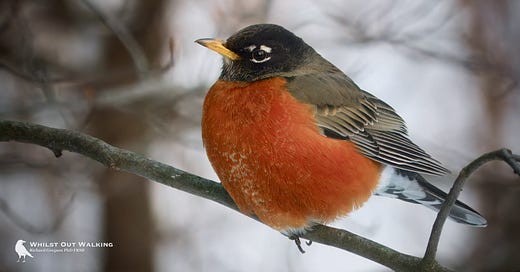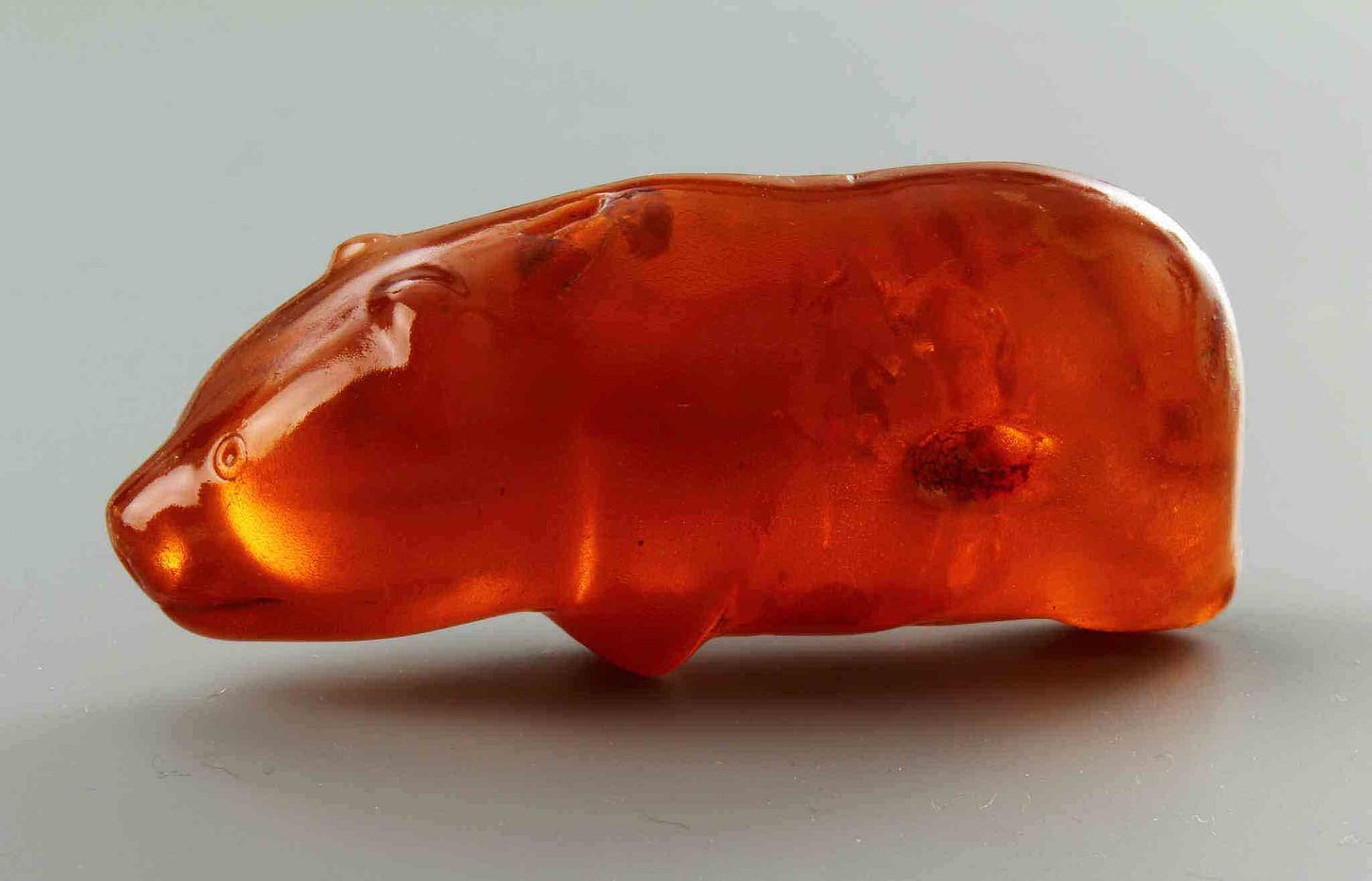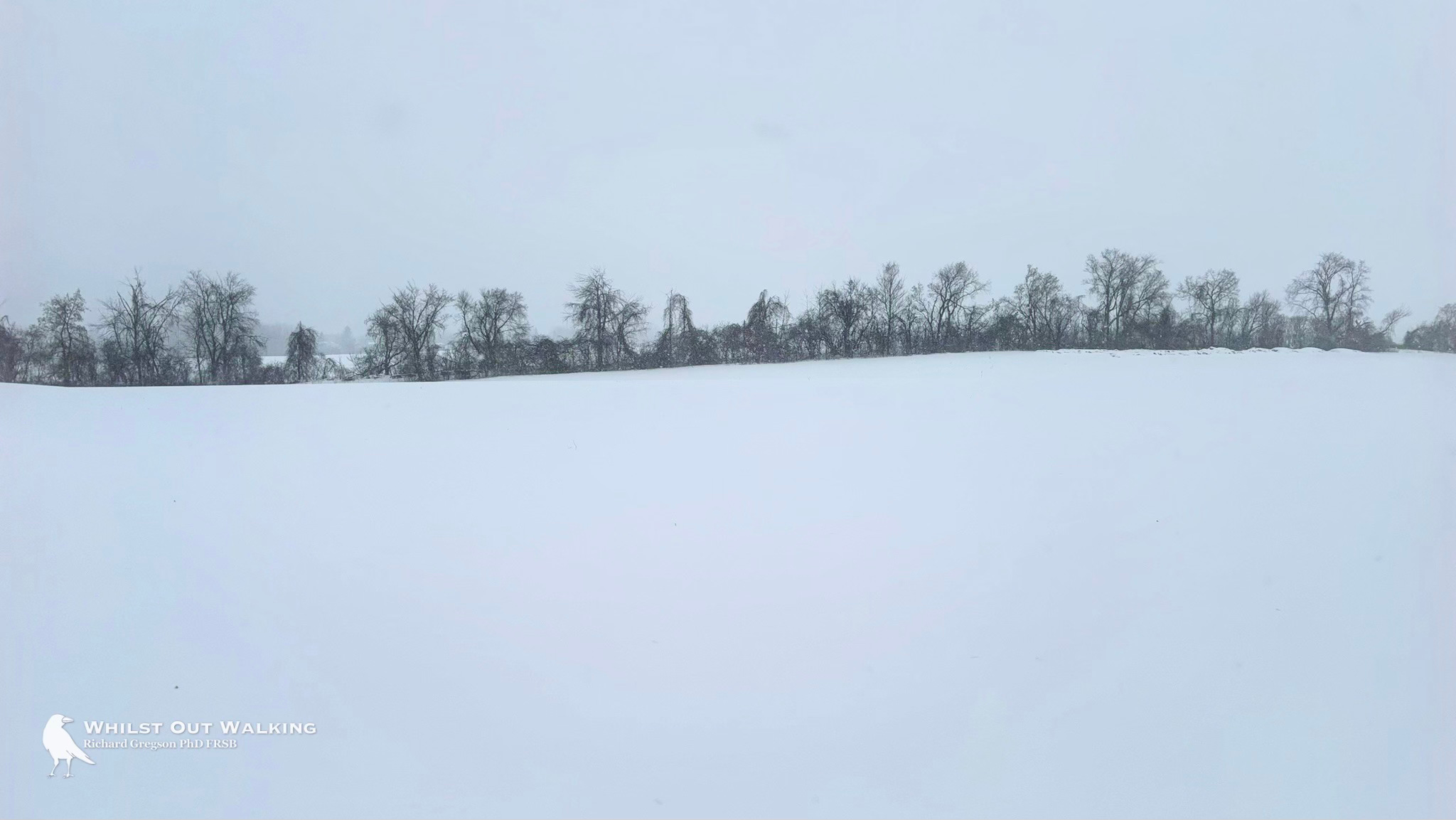I shared this Robin on the socials yesterday and it got so positive a reaction I am sure my much wider Substack readership will enjoy it too … all fluffed up on a very cold day.

Starting with a beautiful bear …
Diverting our minds from Trumpland for a moment.
This gorgeous artifact is the Amber Bear of Slupsk. Found in 1887 in a peat bog near Slupsk, Poland, and more than 3,000 years old. Possibly even older, as similar amber bears (and other little amber animals like birds and elk) have been found at sites in Jutland, Denmark, dating to the Mesolithic period (12,000-3,900 BC).
Many of them have faint grooves that appear to have been caused by the rubbing of string - like this one if you look carefully. You can surmise that it warn around somebody’s neck and somehow fell off into the bog - stuff happens. The amulet is now in a museum but the “Amber Guild” of Slupsk keep a copy on display. Each year since 1924 the copied bear has been auctioned for charity and replaced by a new model.
Not that many winter weeks left
Right now, when the world is so cold the snow deep, it’s hard to think that the snow could be gone a few things starting to stir in maybe six weeks time but generally speaking about the middle of March is when we emerge blinking into the light. Doesn’t mean there won’t be more snow, in fact quite heavy snow is not unknown in April, but six weeks from now there will be better times starting to show. There could be snowdrops, early crocuses, the first returning Red-winged Blackbird males, while the male Goldfinches will be on the way to regaining their yellow feathers … in fact already we see some birds are yellower than they have been. Not much green in the world to enjoy, but give it time and our thick coats can be exchanged for something lighter.
Northern Red Oak
Whilst out walking I like to check the snow for interesting seasonal items such as this remnant leaf from a Red Oak tree. Plenty more like that, always something to make a note of.
A Cold Goldfinch
“The Watcher”
Technoparc Bombshell
In what is otherwise a fairly industrial part of Montreal to the north of the airport you will find an amazing piece of urban wetland that is simply heaving with wildlife and plants. It’s fairly unique and hugely important. Despite its location, it is one of the most biodiverse patches of undeveloped land in the city. A large part of the area is owned by the airport authority but has thus far been saved from development by the work of many people. Some 25 adjacent municipalities and boroughs have come out in favor of protecting the site, including the City of Montreal, the Borough of Saint-Laurent and the City of Dorval.
Now it seems that ADM (Aéroports de Montréal) plan to develop over 100 ha in the sector, including natural and wetland environments. A Master Plan, which does not respect the will of those 25 municipalities and boroughs has already been submitted to Transport Canada, who have until March 21 to accept it.
Needless to say, there is bound to be pushback, but it is disconcerting to discover that such a thing could even be considered. Fingers crossed that the Technopark can be saved. It is quite unique. Not all the site will be lost, last year Montreal spent $30M to acquire a part of it - thereby demonstrating with their money the importance of the location - but that will be put at risk by the fragmentation this new plan with cause.
Quote: “What's unique about this site is that we have three major marsh complexes, wetlands, shrubby wastelands, swamps, an exceptional forest,” Learn about the birds by following this link:
The ADM (airport) says that they “oppose the expansion of the conservation project because it would attract more birds to the area, which pose a crash risk to airplanes.” Funny how other airports in the world with birds in the surrounding area manage to handle this risk.
Hoping this gets sorted once and for all. A wildlife area like this is irreplaceable and hugely important. I will be following developments.












Sad to hear that your local airport in Canada has the same deaf ear to what the people want, as our airports have here in the US. Our airports/government deal with the possible 'bird airstrike' problem by quietly buying up any surrounding land and cutting down tall trees and killing off any flocking birds such as geese, ducks and even local eagles. This is all done in preparation for expansion of airport runways. Meanwhile they allow developers to come in and build high cost housing and such, which in a few years is again taken by eminent domain and allows the developers to report a loss on their taxes. This leaves the local small towns to pay for things like roads, lighting and septic systems that were put in place for the now to be razed structures. The whole process goes on over a few decades and people are mostly unaware of what is taking place.
Those who do try to raise consciousness of what is happening are often caught loosing their investment in their homes of many years (their nest eggs) and actually made fun of by lawyers representing the airports, as being stupid enough to buy and build near the airport and not acknowledging that many owned their land before the airport was built. This has been going on in most of the major cities in the US my whole life time. One of our many not so hidden secrets. Just too big to see without a guided tour.